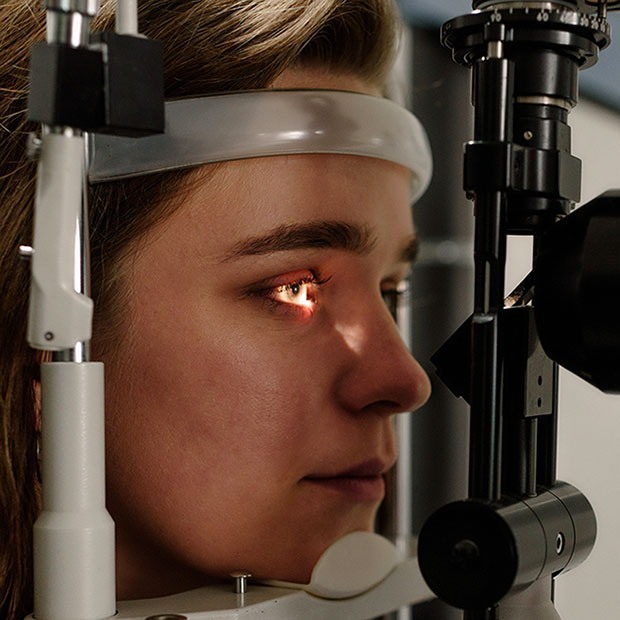Glaucoma: Types and Risk Factors

Clear eyesight requires all of the intricate parts and systems of the eye to work together.
If one thing goes wrong inside the eye, it is often enough to seriously impact eyesight and the health of the eye. For example, we don’t often think much about the fluid inside the eye, but that fluid has to stay within a very narrow pressure range. If the pressure rises, it can damage the ocular nerve, causing permanent vision loss. This is the basic process of glaucoma.
How the Drainage Cycle Works in a Healthy Eye
Our eyes are filled with transparent fluids. The front chambers contain aqueous humor, while the larger chamber in the back contains vitreous humor. The fluid doesn’t just stay put forever, though; it gets replenished and cycled out to keep it fresh. It’s very important for the old fluid to be able to drain away as fast as new fluid is produced. If the drainage cycle becomes interrupted or blocked, that’s glaucoma.
Different Types of Glaucoma
We’re going to focus on the two most common forms of glaucoma: angle-closure and open-angle. Angle-closure glaucoma happens when the eye’s drainage canals are physically blocked by the iris. This form of glaucoma often comes with symptoms like nausea, headaches, very blurry vision, pain in the eye, and halos appearing around lights. Angle-closure glaucoma can come on very suddenly. These symptoms are warning signs that it’s time to hurry to an eye doctor.
The vast majority of glaucoma cases (around 90%) are open-angle glaucoma, which is much more gradual as the eye’s drainage canals become clogged a little bit over a very long time, slowing down the draining. It can happen so slowly that it’s hard for the patient to notice until it’s in the later stages, but by then, a lot of damage has been done. This is one reason regular eye exams are so important. The earlier we catch open-angle glaucoma, the earlier we can intervene and prevent further damage.
Glaucoma Risk Factors
Everyone is, to some extent, at risk of developing glaucoma, but certain factors can make it much more likely. Angle-closure glaucoma is more likely to affect a person of Asian descent, while Black and Hispanic people are more likely to develop open-angle glaucoma, as are elderly people.
One of the biggest risk factors of glaucoma after age is heredity. Studies estimate that most glaucoma cases are familial. A person with a sibling who has glaucoma is ten times more likely to get it than someone who doesn’t. Eye injury and steroid use are also risk factors.
Early Diagnosis Makes a Huge Difference
Right now, there is no way to reverse damage to the optic nerve from glaucoma. Improvements in science and medicine may one day change that, but what modern treatments can do is halt glaucoma in its tracks. The earlier it is detected, the better. Make sure to learn what risk factors you have and keep up with your regular eye exams to protect your eyesight!